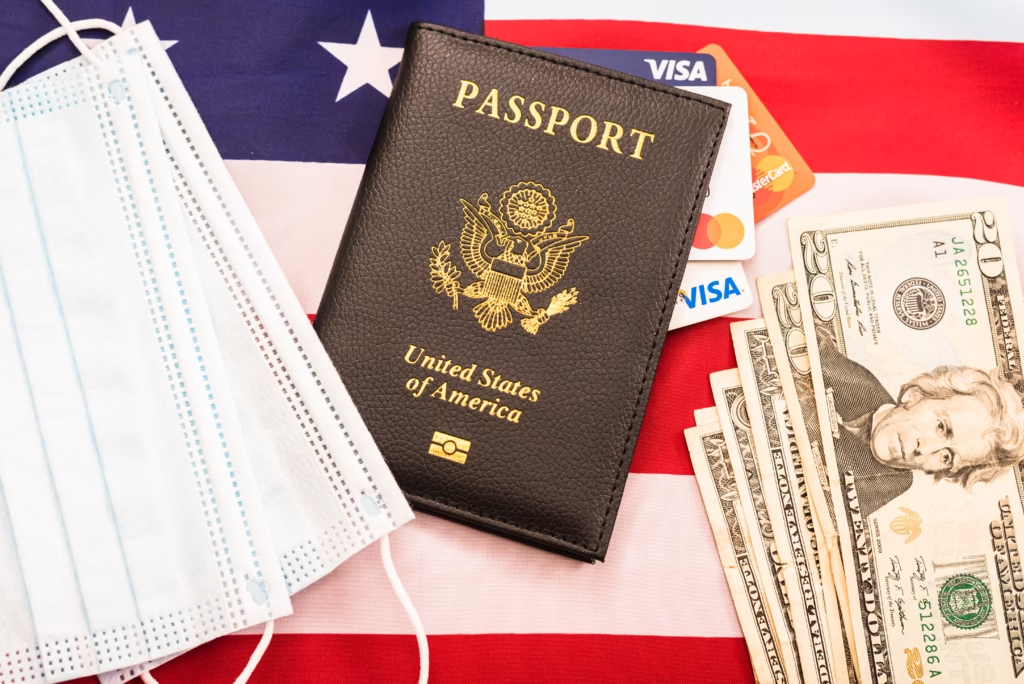
Introduction to Indianapolis
Indianapolis, often referred to as Indy City, is the vibrant capital of the state of Indiana, situated in the central part of the United States. Founded in 1821, the city was strategically established as a midpoint for trade and transportation, taking advantage of existing waterways and the burgeoning rail system. Its geographical location has significantly contributed to its growth and development, making it a pivotal hub for commerce and logistics in the Midwest.
Historically, Indianapolis has played an important role in the nation’s development. The city gained prominence in the late 19th century, particularly during the industrial revolution, which brought about significant population growth and economic opportunities. The introduction of the automobile industry in the early 20th century further cemented its status as a manufacturing powerhouse. Over the years, Indianapolis has witnessed a number of key growth moments, most notably the establishment of major institutions and the hosting of various significant events, such as the Indianapolis 500, one of the most renowned automotive races worldwide.
Today, Indianapolis stands out not only as Indiana’s capital but also as a cultural and educational center. The city is home to a diverse population which contributes to its rich cultural tapestry, featuring numerous museums, parks, and historical sites. Furthermore, the city’s focus on sports, healthcare, and technology has positioned it as a significant economic player on both a state and national level. With a continually evolving skyline and a commitment to community development, Indianapolis remains a crucial part of the American landscape, embodying the spirit of innovation and resilience that cities strive to achieve.
Origins of the Nickname ‘Indy’
The nickname ‘Indy‘ for Indianapolis has its roots in the abbreviation of the city’s full name. As cities often undergo transformations in how they are perceived and referred to by both locals and visitors, Indianapolis is no exception. The journey to becoming known as Indy began with practicality; the name was shortened for ease of communication. More specifically, it provided a catchy and approachable alternative for a city with a more lengthy and formal title.
Culturally, the evolution of the nickname reflects aspects of local identity. Residents and community members adopted ‘Indy’ not just for convenience but as a way to express pride in their city. The nickname gained traction through various channels, including sports, music, and local events. For instance, in the realm of sports, the Indianapolis Colts and the Indianapolis 500 have significantly aided in popularizing the term among fans, helping solidify it within communal interactions. This cultural integration made ‘Indy’ synonymous with local enthusiasm, embodying the spirit of the city, making it more accessible and relatable.
Over time, the nickname has transcended its original, utilitarian purpose. Today, ‘Indy’ is often found in promotional materials, newspapers, and various forms of media, signaling acceptance among both residents and visitors. In some contexts, it carries a sense of familiarity that aligns well with the hospitality and warmth for which Indianapolis is known. The power of ‘Indy’ as a moniker exemplifies how communities mold their own identities, with citizens embracing the informal term that is reflective of their experiences in the city.
Cultural Significance of ‘Indy’
The city of Indianapolis, commonly referred to as ‘Indy’, encompasses a rich tapestry of cultural significance that resonates deeply with its inhabitants and visitors alike. This nickname serves not only as a shorthand for the name of the city but also as a vibrant symbol of regional identity, pride, and a burgeoning sense of community among the people of Indiana.
At the heart of this cultural significance is the way ‘Indy’ reflects the spirit of the city’s residents. The term fosters a sense of belonging that is both inclusive and inviting, representing the diverse communities that populate the area. Over the years, local organizations and grassroots movements have embraced ‘Indy’ as a rallying cry for unity, highlighting the city’s historical journey from its early days to its current status as a thriving metropolis. The nickname thus encapsulates not just a location, but also shared experiences and evolving narratives that intertwine the lives of those who call this place home.
Moreover, the cultural landscape of Indianapolis is enriched through its music, art, and local events which have adopted this identity. Festivals such as the Indy Jazz Fest and the ‘Indy 500’ car race are embraced with notable enthusiasm, showcasing talent and creativity that emanate from the community. Local artists and musicians often leverage the term ‘Indy’ to associate their work with the city, fostering a distinctive voice in the broader artistic domain. This representation of ‘Indy’ in various cultural facets contributes to enhancing the city’s image while nurturing pride and engagement among residents.
Hence, the term ‘Indy’ extends beyond mere convenience; it embodies a cultural resonance that binds community spirit, history, and artistic expression into a cohesive identity that embodies the heart of Indianapolis.
Major Attractions and Events in Indy
Indianapolis, commonly referred to as Indy City, is a vibrant metropolis offering a plethora of attractions and events that form a significant part of its identity. One of the most renowned highlights is the Indianapolis 500, a legendary automobile race held annually over Memorial Day weekend. This exhilarating event attracts thousands of spectators worldwide, making it a cornerstone of Indy’s cultural landscape. The iconic Indianapolis Motor Speedway hosts this incredible race, drawing not only racing fans but also families and tourists eager to experience the thrill of this historic event.
In addition to the Indianapolis 500, the city hosts various local festivals that showcase its rich cultural tapestry. Events like the Indiana State Fair and the Indianapolis Artsgarden Festival celebrate the city’s agricultural roots and artistic spirit, respectively. These festivals feature local food, art, and music, fostering a sense of community and belonging among residents and visitors alike. Moreover, the vibrant cultural scene is supported by museums such as the Indianapolis Museum of Art, where art enthusiasts can explore diverse collections ranging from ancient to contemporary works.
Sporting events play a pivotal role in defining Indy City’s character. Aside from auto racing, the city is home to professional teams like the Indianapolis Colts (NFL) and the Indiana Pacers (NBA). The Lucas Oil Stadium and the Gainbridge Fieldhouse serve as venues for these teams, offering fans an exhilarating atmosphere to watch their favorite sports. The city also hosts various marathons, including the Indianapolis Marathon, which attracts runners from all over the globe. Such events exhibit the city’s dedication to sports and community engagement.
Ultimately, the combination of thrilling events, cultural festivals, and world-class venues contributes to Indianapolis’s reputation as Indy City, embodying the spirit and energy of its residents.
The Role of Sports in Indianapolis Identity
Indianapolis, often referred to as Indy City, has a reputation that is intricately tied to its vibrant sports culture. The city’s identity has been shaped considerably by its various professional sports teams, which play a pivotal role in the local community and foster a sense of unity among residents. At the forefront of these teams is the Indianapolis Colts, a National Football League franchise that has garnered a loyal following since its establishment. The excitement surrounding the Colts’ games is palpable, as fans clad in blue and white fill the Lucas Oil Stadium, creating an electric atmosphere that resonates throughout the city.
Equally significant is the Indiana Pacers, the NBA team that represents Indianapolis in the world of basketball. The Pacers have not only facilitated competitive play but have also established themselves as a source of pride for the community. The fervor surrounding basketball in Indy City is evident during game nights, where fans come together to share in their successes and rally through challenges. Moreover, the Indianapolis 500, one of the most prestigious car racing events globally, showcases the city’s deep-rooted connection to motorsports. This iconic race, held annually at the Indianapolis Motor Speedway, attracts both national and international attention, further solidifying the city as a sporting capital.
Local athletes have made notable contributions to the fabric of Indianapolis identity as well. Figures such as Reggie Miller and Peyton Manning have left indelible marks on their respective sports, inspiring generations of aspiring athletes. Their successes resonate within the community, fostering a strong sense of local pride. Beyond major leagues, Indianapolis also hosts significant collegiate sports events, creating ample opportunities for community engagement and camaraderie among residents.
In essence, the profound influence of sports on Indianapolis’s identity as Indy City cannot be overstated. The collective experience of cheering for local teams and engaging in sporting events fosters a unique bond among residents, establishing sports as a central pillar of the city’s culture.
Culinary Scene and Local Delicacies
Indianapolis, often affectionately referred to as Indy City, boasts a rich and diverse culinary scene that captivates both locals and visitors alike. The city’s gastronomic culture is deeply rooted in its history, which has led to the emergence of unique dishes and beloved local delicacies. Renowned for its vibrant food landscape, Indianapolis is home to award-winning restaurants that showcase the talents of innovative chefs dedicated to elevating the dining experience.
One of the most iconic dishes associated with Indy is the pork tenderloin sandwich, which is a staple at numerous eateries across the city. This hearty sandwich typically features a breaded and fried pork cutlet served on a bun, often garnished with pickles and onions. It represents the heartiness and warmth of Indiana’s culinary traditions. Furthermore, Indianapolis embraces its agricultural heritage by emphasizing farm-to-table practices, allowing restaurants to create seasonal menus that highlight fresh, locally-sourced ingredients.
The city also hosts a myriad of food festivals throughout the year, celebrating the culinary diversity that defines Indianapolis. Events such as the Indianapolis Food & Wine Experience and the Indiana State Fair showcase local chefs and vendors, offering a chance to sample a variety of dishes and beverages. These festivals not only attract food enthusiasts but also foster a sense of community among residents and tourists, who come together to appreciate Indy’s culinary offerings.
Moreover, international cuisine has found its place in Indianapolis, with restaurants serving dishes from across the globe. From authentic Italian pasta to vibrant Thai curries, the city’s multicultural environment is mirrored in its dining options, making it a dynamic food destination. Whether indulging in local fare or international flavors, the culinary scene in Indianapolis is undeniably rich and inviting, further solidifying the city’s reputation as a foodie haven in the heart of the Midwest.
Economic Aspects of Indy City
Indianapolis, often affectionately referred to as Indy City, has established itself as a significant economic hub in the Midwest region of the United States. The city’s strategic location and robust infrastructure not only attract businesses but also foster a diverse range of industries that contribute to its economic vitality. This economic landscape is characterized by sectors such as manufacturing, healthcare, finance, and technology, making it a dynamic environment for both local and international enterprises.
In recent years, the growth of the healthcare industry has been particularly noteworthy, with Indianapolis housing major employers like Eli Lilly and Company, and a multitude of hospitals that underpin the city’s identity as a healthcare leader. This concentration of healthcare firms has not only bolstered job creation but has also enhanced the city’s reputation within the life sciences sector, contributing to Indy City’s appeal as a place for professionals seeking career opportunities.
Additionally, the city’s emphasis on technology and innovation plays a pivotal role in economic development. Various start-ups and tech companies have sprouted in recent years, supported by local initiatives and a growing entrepreneurial spirit. The focus on innovation is reflected in the establishment of tech incubators, which provide resources and assistance to budding businesses, further entrenching Indianapolis as a progressive city.
Moreover, Indianapolis has a vibrant real estate market that reflects its economic growth. The rise of new commercial developments, mixed-use spaces, and the renovation of historic buildings signify not only an increase in investment but also an influx of residents drawn by the thriving economy. All these elements contribute to the identity of Indy City as a progressive urban landscape, where economic activity is robust and ever-evolving.
In conclusion, the economic aspects of Indianapolis, encapsulated within the nickname Indy City, highlight the city’s remarkable growth trajectory. By fostering a diverse business landscape, focusing on key industries, and supporting innovation, Indianapolis continues to carve out its identity as a burgeoning economic powerhouse.
Public Perception and Community Identity
In recent years, the perception of Indianapolis, colloquially known as ‘Indy,’ has significantly shaped the community identity of its residents. The nickname not only represents a geographic location but also encapsulates a cultural ethos that fosters civic pride among its inhabitants. Many residents embrace this moniker, perceiving it as a badge of honor that unites diverse populations within the city. This sense of belonging is crucial, as it drives residents to advocate for Indianapolis, its offerings, and its potential to grow.
The decentralized use of the nickname ‘Indy’ allows for a greater sense of inclusion among residents. Various community initiatives and local businesses have adopted this term in their branding, promoting a spirit of collaboration. This grassroots effort encourages residents to feel a part of a larger narrative, reinforcing civic engagement. Community events, such as the famed Indianapolis 500, serve as focal points where individuals come together to celebrate their city. These occasions galvanize a shared sense of identity that transcends individual differences.
For newcomers, the perception of Indianapolis may differ before they arrive. Some may initially view it merely as a midwestern city, perhaps unaware of the vibrant culture and community dynamics that exist. However, many find that once they become part of the ‘Indy’ community, they quickly adopt the local spirit, appreciating the inclusiveness and warmth that characterize its residents. As these new residents immerse themselves in the community, they contribute to the evolving identity of Indianapolis, thereby perpetuating a cycle of communal pride.
In conclusion, the perception of Indianapolis as ‘Indy’ plays an integral role in shaping community identity. From fostering civic pride to attracting newcomers who embrace the local spirit, this nickname contributes to the unity and dynamism of the city’s populace.
Conclusion: The Global Identity of Indy
Indianapolis, often affectionately referred to as “Indy,” encapsulates the essence of a vibrant metropolitan area that marries rich history with modern growth. The nickname ‘Indy city’ signifies more than just a shortened form of its name; it represents a community identity that is both approachable and dynamic. The usage of ‘Indy’ fosters a sense of camaraderie among its residents and visitors, creating an inviting atmosphere that echoes the warmth of Midwestern hospitality.
The impact of this nickname extends beyond regional boundaries, as ‘Indy’ resonates with individuals globally. From motorsport enthusiasts who flock to the iconic Indianapolis Motor Speedway to culture seekers who appreciate the city’s arts and festivals, the name signifies a hub of activity that appeals to a diverse audience. This duality of historical reverence and contemporary relevance enhances Indianapolis’s global identity, allowing it to stand out against other cities.
Moreover, ‘Indy city’ conveys an image of innovation and progress. The investments in infrastructure, education, and green spaces contribute to a narrative that attracts new residents and businesses alike. This evolution plays an integral role in how the city is perceived outside its own borders. Each year, as major events unfold, such as the Indianapolis 500 and the Indiana State Fair, the city embraces its moniker with pride, showcasing the unique vibe that defines life in Indy.
In conclusion, the nickname ‘Indy’ not only exemplifies a friendly, welcoming identity but also encapsulates the rich tapestry of historical depth, cultural evolution, and modern achievements that characterize Indianapolis. By nurturing this duality, the city solidifies its position as a prominent player on the global stage, inviting recognition and admiration from all corners of the world.








